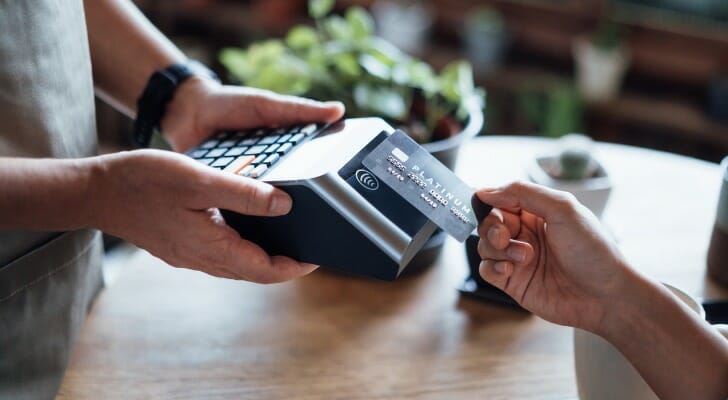Every bank has different restrictions limiting how much you can withdraw from your account. While some banks may allow you to withdraw a couple hundred dollars, others may allow you to withdraw thousands. However, when and where you make your withdrawals also matter.
Financial planning goes beyond banking alone. Speak with a financial advisor to work on your retirement plan or other financial goals.
What Are Withdrawal Limits?
A daily withdrawal limit is the maximum amount of money you can withdraw from your bank account in a single day.
These limits largely exist for two reasons.
- Management of cash flow and liquidity: Like ATMs, banks keep a limited amount of cash on hand at any given time. By setting withdrawal limits, the bank can control how much they have to distribute at any given time.
- Security: By limiting daily withdrawals, banks help protect their customers against unauthorized access. Even if someone gets your debit card and PIN number, there’s a limit to the damage they can do.
Types of Withdrawal Limits
ATM Withdrawals
Your bank’s ATM withdrawal limit is the maximum amount of physical cash you can take out of an ATM. For example, many banks have a $500 limit, which means you cannot take out more than $500 in cash in a 24-hour period..
Typically banks apply the ATM limit cumulatively, across all ATM transactions This means there is not a limit on how much you can withdraw at once, but rather the total limit you can withdraw from ATMs over the course of one day.
While your bank sets a limit on ATM withdrawals, individual ATM operators can do so as well. This limits how much money you can take out of that operator’s machines over the course of a single day. For example, say your bank has a $1,000 withdrawal limit and you use an ATM with a $600 limit. This means that you can withdraw up to $600 from that ATM operator’s machines in a single day, but you can also withdraw an additional $400 from other ATMs before maxing out your bank’s limit.
Cashier/Teller Withdrawals
This is the maximum amount of physical cash you can withdraw from your bank account in a 24-hour period through in-person withdrawals. For example, your bank may limit cashier transactions to no more than $20,000 in physical cash each day.
This differs from an ATM withdrawal because you are working directly with a teller, which helps alleviate some of the security concerns. The branch also has significantly more cash on hand than an ATM, reducing liquidity concerns.
While banks often have some sort of cash withdrawal limit, they are typically much higher than ATM withdrawal limits. In some cases, this is a general limit on cash transactions, meaning the same limit also applies to other transactions like cashing a check. Banks may also set their limits around immediate transactions, meaning that you can still withdraw large amounts of cash, but you will need to make a request in advance.
Debit Withdrawal Limit
This is the maximum amount you can spend with your debit card in a 24-hour period. For example, your bank may have a maximum of $5,000 in daily debit card spending.
Banks treat debit card transactions as the electronic equivalent of a cash transfer. Since this is an electronic payment, a debit card does not present any special liquidity issues. However, it does present the same security concerns as an ATM withdrawal.
As a result, it is not uncommon for banks to impose debit withdrawal limits. However, when they exist, these limits are almost always higher than typical ATM withdrawal limits.
Legal and Savings Withdrawal Limits

For a standard depository account, there are no laws or legal limiting how much cash you can withdraw. Withdrawal limits are set by the banks themselves and differ across institutions.
That said, cash withdrawals are subject to the same reporting limits as all transactions. If you withdraw $10,000 or more, your bank must report it to the IRS by law. This helps prevent money laundering and tax evasion.
Still, few banks set withdrawal limits on a savings account. Under Regulation D, the Federal Reserve had previously required banks to limit transfers and withdrawals from savings accounts, but Regulation D was suspended in 2020.
Today, the main restriction on a savings account is the transaction limit, allowing for six each month. You also have less access to your funds than a checking account, because savings accounts typically do not come with benefits like checkbooks or debit cards. However, within those limitations, you can generally move any amount of money that you please.
Checking Withdrawal Limits
Every bank has its own rules when it comes to daily withdrawal limits, and these terms can vary widely.
Most banks set the lowest limits on ATM withdrawals. There are often higher limits for debit transactions and even higher limits for in-person cashier transactions.
Banks may also set different transaction limits based on your account. For example, a newer account, no-fee checking or student checking accounts may have low withdrawal limits. By contrast, a longstanding customer or one with a high-interest checking account may have a much higher withdrawal limit than usual.
While a comprehensive list of withdrawal fees is beyond the scope of this article, below is a representative sample of ATM and debit withdrawal limits at eight banks at the time of writing. Note that these are representative numbers only, so the specific limits at any given bank will depend on your account type, usage and more.
| Bank | Daily ATM Limit | Daily Debit Limit |
| Bank of America | $1,000 or 60 individual bills | $1,000 (varies based on account) |
| Capital One | $5,000 | $5,000 |
| Citi | $1,500-$2,000 | $5,000-$10,000 |
| PNC | $2,500 | $2,000-$5,000 |
| TD Bank | $1,000 | $1,000 (varies based on account) |
| U.S. Bank | Varies based on account | Varies based on account |
| Wells Fargo | Varies based on account | Varies based on account |
When you open a bank account, it is important to learn what withdrawal limits come with it. In particular, ask about any debit limits that may apply. Your bank may not have debit limits, but if they do, they can easily impact your spending. For example, say your bank sets a $3,000 limit on debit spending in a 24-hour period. While you may not ordinarily spend that much, it may cramp your plans when you need to pay for airfare or make another large purchase. Instead of making your purchase, you could instead have your card declined.
How to Make a Large Withdrawal With Your Bank
If you need to withdraw a large amount from your bank account, communication with your bank is key. By notifying your bank, you alleviate any potential security concerns about fraudulent activity.
A visit to your local branch for an in-person transaction with a cashier is likely the best way to make a large withdrawal. However, you do have other options. You can call your bank directly to notify them of your intention to make a large withdrawal. Some banks also allow you to go online and request a temporary increase to your daily withdrawal limit so you can receive your funds.
Bottom Line

An ATM withdrawal limit is the maximum amount of cash that your bank will let you take out of ATMs in a single day. Your debit spending limit, if any, is the most you can spend with your debit card in a single day. Every bank has different rules around this, so make sure you understand your own account’s limits.
Tips on Banking
- For any given bank account, your account limits will partially depend on the specific type of account you have. So the first step is making sure you have an account that works for you.
- A financial advisor can provide valuable insight and guidance as you make choices about types of banks to use. If you don’t have a financial advisor yet, finding one doesn’t have to be hard. SmartAsset’s free tool matches you with vetted financial advisors who serve your area, and you can interview your advisor matches at no cost to decide which one is right for you. If you’re ready to find an advisor who can help you achieve your financial goals, get started now.
Photo credit: ©iStock.com/dobok, ©iStock.com/AsiaVision, ©iStock.com/mladenbalinovac
